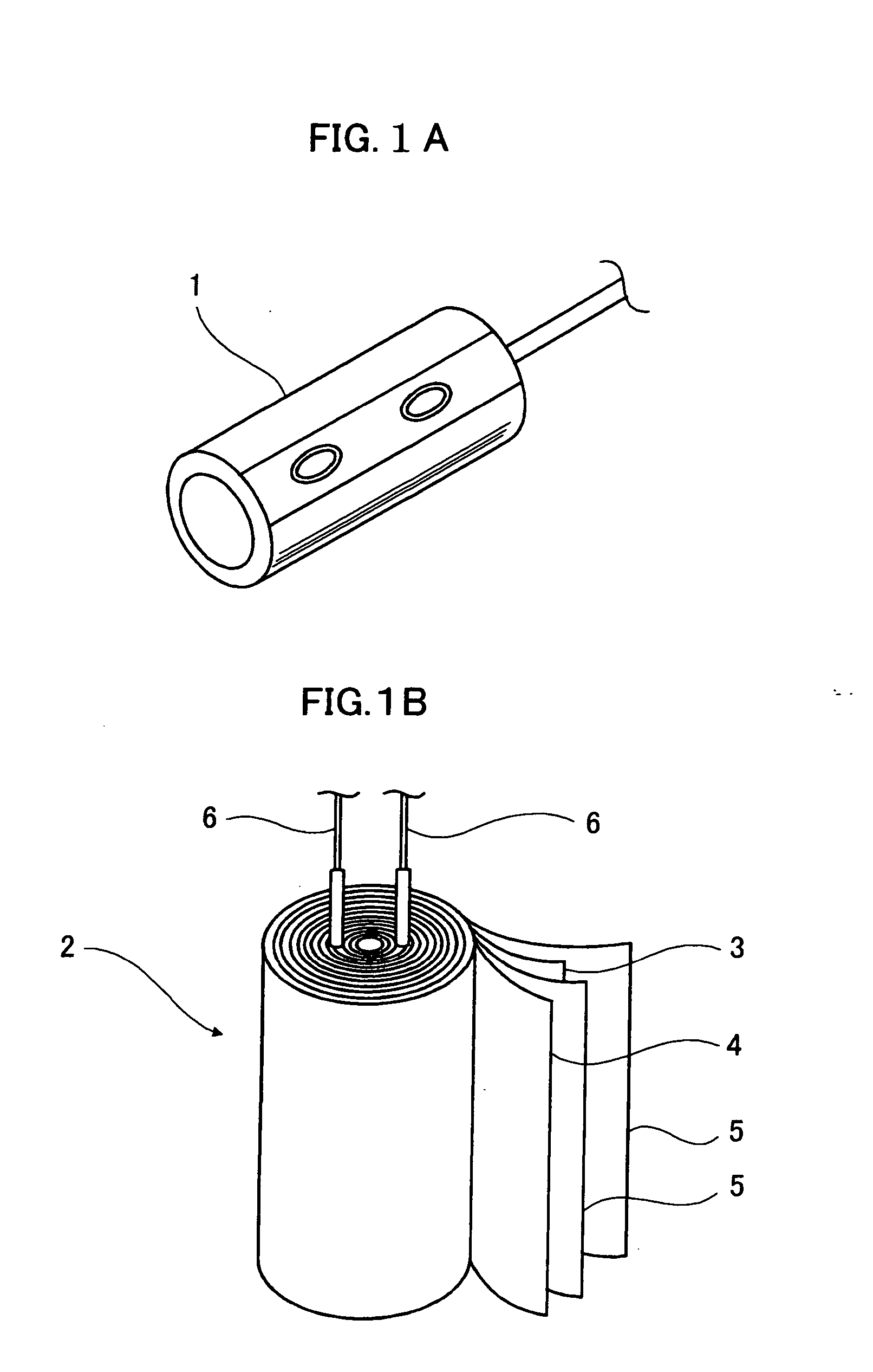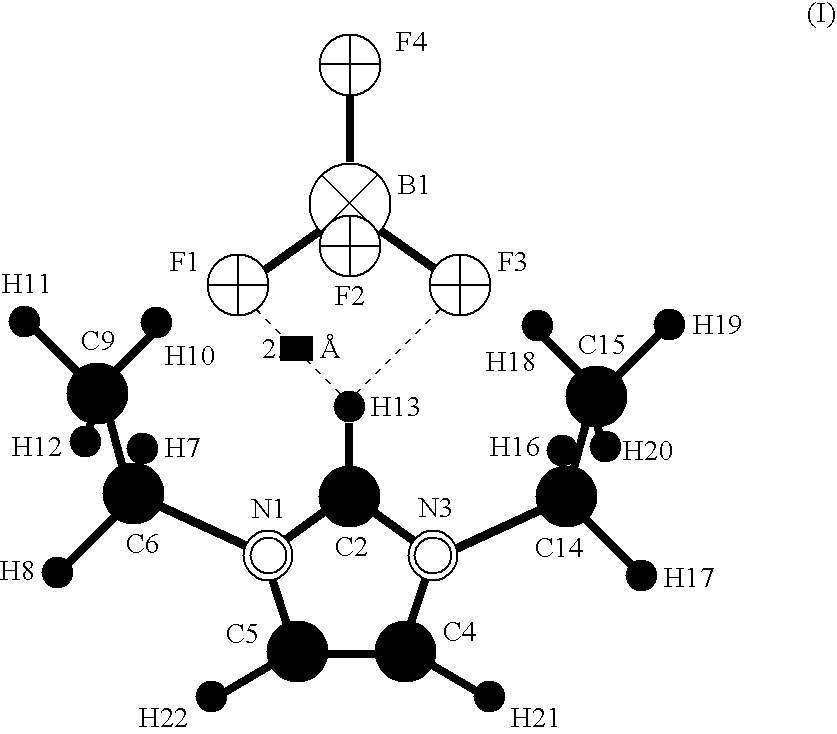Electrolytic solution for electrochemical element, method of searching for the same, method of producing the same, and electrochemical element
a technology of electrochemical elements and electrochemical solutions, applied in the direction of variable capacitors, non-aqueous electrolyte cells, fixed capacitors, etc., can solve the problems of difficult prediction, inevitably occurring multiple trial-and-error cycles, and requiring enormous time and expense, so as to achieve the effect of further improving the performance of an electrochemical capacitor with tim
- Summary
- Abstract
- Description
- Claims
- Application Information
AI Technical Summary
Benefits of technology
Problems solved by technology
Method used
Image
Examples
example 1
[0040] The structure of the ion associate (I) contained in the electrolyte for electrochemical element in Example 1 of the present invention is shown below. The structure was obtained by means of a molecular orbital calculation based on the Hartee-Fock method and a 3−21+G basis function set. The anion and cation components constituting the ion associate are tetrafluoroborate and 1,3-diethylimidazolium, respectively. The numbers attached to the elemental symbols serve to identify the atoms situated at the individual sites.
[0041] Tetrafluoroborate has a structure in which fluorine atoms F1, F2, F3 and F4 are bonded to a boron atom B1 each in a direction toward a vertex of a tetrahedron.
[0042] 1,3-Diethylimidazolium has a five-membered ring in which a nitrogen atom N1, a carbon atom C2, a nitrogen atom N3, a carbon atom C4 and a carbon atom C5 are sequentially bonded in this order, and the carbon atom C5 is bonded to the nitrogen atom N1.
[0043] To the nitrogen atom N1 in the five-m...
example 2
[0062] The structure of an ion associate (III) contained in the electrolyte for electrochemical elements in Example 2 of the present invention is shown below. The structure was obtained in the same manner as in Example 1. The anion and cation components constituting the ion associate are tetrafluoroborate and 1.3-dimethyl-4-trifluoromethylimidazolium, respectively. The numbers attached to the elemental symbols serve to identify the atoms situated at the individual sites.
[0063] Tetrafluoroborate is constituted with a boron atom B1, and fluorine atoms F1, F2, F3 and F4.
[0064] In 1,3-dimethyl-4-trifluoromethylimidazolium, a nitrogen atom N1, a carbon atom C2, a nitrogen atom N3, and carbon atoms C4 and C5 form a five-membered ring.
[0065] To the nitrogen atom N1 in the five-membered ring, a methyl group composed of a carbon atom C6 and hydrogen atoms H7, H8 and H9 is bonded; to the carbon atom C2, a hydrogen atom H10 is bonded; to the nitrogen atom N3, a methyl group composed of a c...
PUM
| Property | Measurement | Unit |
|---|---|---|
| wt% | aaaaa | aaaaa |
| wt% | aaaaa | aaaaa |
| pressure | aaaaa | aaaaa |
Abstract
Description
Claims
Application Information
 Login to View More
Login to View More - R&D
- Intellectual Property
- Life Sciences
- Materials
- Tech Scout
- Unparalleled Data Quality
- Higher Quality Content
- 60% Fewer Hallucinations
Browse by: Latest US Patents, China's latest patents, Technical Efficacy Thesaurus, Application Domain, Technology Topic, Popular Technical Reports.
© 2025 PatSnap. All rights reserved.Legal|Privacy policy|Modern Slavery Act Transparency Statement|Sitemap|About US| Contact US: help@patsnap.com



